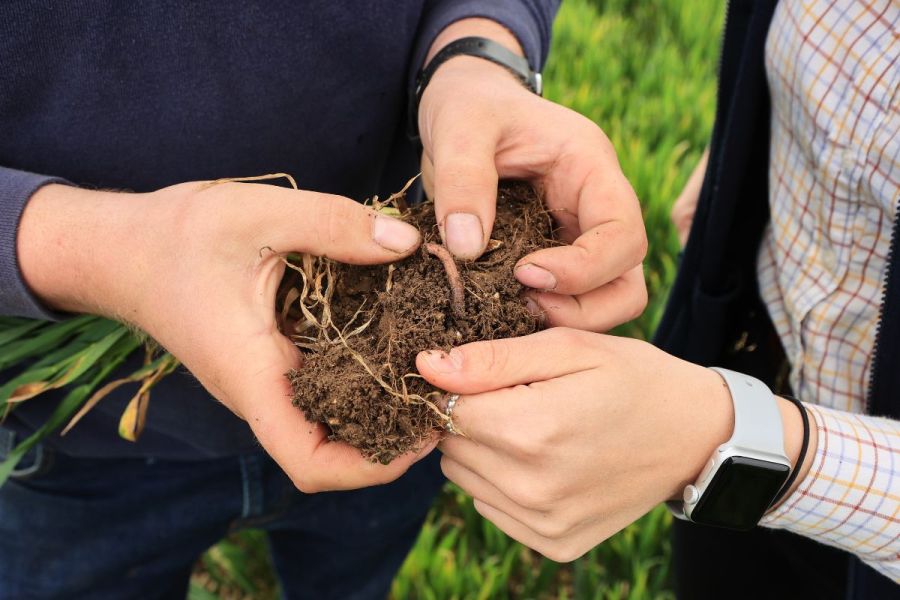What does a sustainable farming future look like? CPM discovers how privately funded natural capital marketplaces could be integral to supporting both sustainable and profitable farming businesses, making them more viable for a changing future.
“We view it as a way to build on SFI, to expand knowledge and progress to a more sustainable future.”
By Melanie Jenkins
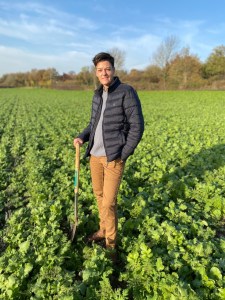
Private funding can provide a per farm approach to help farming businesses go beyond the base level supported by government schemes, explains Jim Stotzka.
From a somewhat unknown phrase to an integral part of a sustainable farming business, it’s clear that natural capital is here to stay. But how can it be integrated profitably on farm? Is it singularly through public funding channels, or can a private marketplace provide opportunities for both farmers and end users?
In a period where every industry is under pressure to be a part of the movement to address climate change, agriculture is in a unique position to be able to reduce emissions of greenhouse gases and to sequester carbon, says Jim Stotzka, Frontier’s lead on sustainability.
But on this topic, the industry is often misrepresented and misunderstood which is something farmers and businesses within the sector want to change, says Frontier’s national technical sustainability specialist, Rob Nightingale. “A lot of farming and land management practices are done well to ensure a resilient landscape that’s capable of producing food. It’s important to highlight these efforts and further promote these good practices, but farmers have to be able to access the right tools and support to implement these actions for the long-term.”
Now, a range of projects underway with Frontier aim to connect all parties of the supply chain on the journey towards greater sustainability, bringing grain buyers closer to the crop production process, linking growers with new funding opportunities, and supporting the positive practices helping to protect vital natural capital assets.
Public money
Public money has long played a role in steering the direction of farming. While this hasn’t been without its challenges in the past, Jim says the new Sustainable Farming Incentive (SFI) outline is both positive and promising. “The SFI provides a good foundation that will drive sustainability on farm.”
It’s designed to encompass all farmers in England, across all systems, business types and operations, according to Will Strong, national commercial sustainability specialist at Frontier. “It’s a general programme to cover the aims of wider environmental targets meaning farmers can easily be involved.”
However, as a publicly funded scheme it will only go so far – the consumer end of the spectrum has sustainability goals to hit too, adds Jim. “This is where private funding models come into play.”
Why private funding streams are important
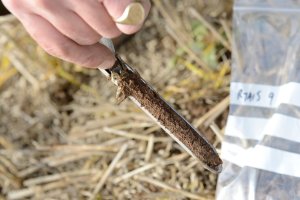
Frontier advisors can help with soil sampling methods and interpretation to support management for better soil health.
“Whereas public funding is tied to an overarching set of goals targeted at the masses, private funding can provide a per farm approach to help farming businesses go beyond the base level supported by government schemes,” explains Jim.
The private model can support companies to achieve their own sustainability objectives too, says Rob. “Reducing carbon emissions is really important to multinational companies, particularly because of pressures both from government and the public to demonstrate they’re meeting environmental targets.”
For farmers though, private funding shouldn’t just be about the financials because that diminishes the wider aim of improving sustainability, warns Jim. “And it shouldn’t just be about what the end users want to do either because that might not work on farm. It has to take all sides into account but also recognise that there’s already so much great work being done.”
However, Jim stresses a key aspect is also providing flexibility to the farmer and capability to grow with the evolving concept that is natural capital.
How Frontier is connecting private funding with farmers
A desire to better connect the sustainability goals of both the end market and growers is what led to Frontier establishing its own ‘natural capital marketplace’. “What we want to see is a system that provides opportunities for everybody involved,” explains Jim. “The end market is looking at how they can purchase a more sustainable product and demonstrate that to their own customers, while growers want to manage risk, substitute their financial income and be supported to implement or even trial more sustainable crop production methods.
“At the base of it we’re all responsible for delivering sustainability to the food chain and ultimately everyone who purchases food.”
Establishing how a natural capital marketplace would work was driven by the objectives of both farmers and consumers, with all groups consulted on the structure of the model to ensure it was representative of all, explains Rob. “On the one hand, we have grain buyers – predominantly food manufacturers – who want to reduce their emissions but realise there’s only so much they can do on their own sites and within their own operations.”
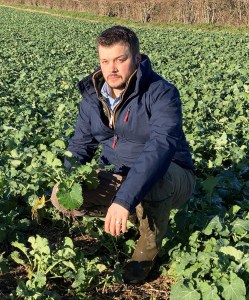
By helping with financial support, consumer businesses can reduce the risk to farmers as they change or adapt aspects of their business, says Rob Nightingale.
On the other hand, famers, as business owners, are facing similar challenges while also navigating changing agricultural policy and the concept of things like carbon markets, says Jim. “But we’re cautious when it comes to carbon markets and offset trading because the impacts of these just aren’t certain.”
It was therefore important for the marketplace to provide security for farmers. “It has to be pragmatic to ensure it works on farm but it also has to make commercial sense, with these aspects strategically pulled together to support our growers to be more profitable.”
How it works
The Frontier team believes it’s in a strong position to assess the sustainability goals of grain buyers, and then collaborate with and support its farmer customers to help meet these. “Goals can be as broad as lowering their carbon footprint,” says Jim. “We work with the end grain user to determine their level of understanding and the ideas they have, and then we look at how that could translate on farm and mutually benefit our growers too.”
It’s important to understand what funding partners would like to see delivered, says Will. “It tends to start at quite a high level, which we then translate to a farm level. This helps show an end consumer what is practical and what farmers can realistically and sensibly achieve.”
According to Rob, Frontier is essentially an ‘interpreter’ in the middle. “The end market wants to see sustainable advances on farm but also realise they have to support farmers to make this happen. They will pay to help implement change, understanding that this helps reduce risk for the farmer who may have to change or develop aspects of their business.”
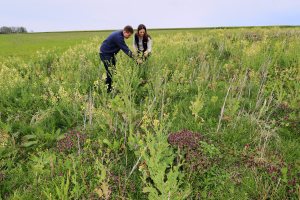
Currently, the model can pay for actions such as specialist crop mixes to encourage more diverse insect species.
Once Frontier has worked with a funder to design and determine the funding level for a project, the next step is to explore what is both desirable and deliverable on farm. The farmer then selects the options they want to sign up to. “We communicate the options to the farmer; talking through what could work for them in terms of productivity and profitability as well as what will provide sustainability benefits.”
Importantly, it’s also about what the farmer feels is achievable and right for their farm, and early adopters of sustainable practices aren’t excluded either, says Will. “Our marketplace is designed to support farmers with the practices they’re already implementing, as well as facilitate the journey of knowledge exchange with the Frontier team so they are supported to do even more.”
In its first year (2021/22), one supply chain partnership which utilised this natural capital marketplace model began with a small cluster of farms before expanding in the second year. This autumn will see it start its third year, and as SFI has evolved, so too has the programme to ensure it can support a variety of scenarios. Initially it only included oilseed rape and wheat but it’ll soon cover more crops to help promote wider rotations.
It’s vital that the model remain adaptable so it doesn’t clash with public funding and can constantly develop, explains Jim. “The recent changes to SFI are in-line with what we’ve already been offering, so now we’re looking to provide additionality to farmers and end users by covering areas that SFI doesn’t.”
The idea is that the scheme will pay for aspects that SFI won’t, now and in the future, says Rob. “For example, if SFI pays for X, we might pay for Y and Z, and these can be stacked together.” This means growers won’t be paid twice to implement a process on farm, but can pick and mix marketplace options to complement any other schemes they may be part of.
According to Will, each funding programme between a the end market and its growers can be tailored to meet demands or targets in certain areas too. “It’s about creating bespoke solutions which build on the actions that are already being funded.”

According to Will Strong, each funding programme between a grain consumer and its growers can be tailored to meet demands or targets in certain areas.
“It’s important to also acknowledge that some on-farm activities or changes may be too big to qualify for sole funding from a single end user, but such scenarios can still achieve partial funding to make them more feasible for a farming business to put in place,” explains Rob.
Currently, the model can pay for actions such as reducing tillage or implementing advanced nutrition plans to boost efficiency, or even the use of specialist crop mixes to encourage more diverse insect species. “It’s about going to the next level beyond what SFI will be doing with farmers,” adds Jim.
In its current iteration, the natural capital marketplace pays on an area basis, but the team is also exploring the idea of a premium payment, explains Jim. “There are a number of ways that the supply chain can deliver payments to growers and we’re looking at what works best, whether on a per area or per tonne basis. This will depend on the partners in the projects and the requirements of all involved.”
Growers will have access to Frontier’s team of experts to help them determine what’s most appropriate for them. “Our advisors can recommend whether a particular cover crop mix is more suitable, or they can help with soil sampling methods and interpretation to support management for better soil health. They are also there to help farmers benchmark and measure any activity on farm to help quantify the positive impacts.”
To determine whether practices have been successfully carried out, Frontier also works with farmers throughout the process to securely gather data as a means of record-keeping, helping to prove what activities are underway and ultimately what benefits are evident as a result.
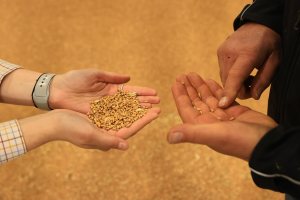
In its current iteration, the natural capital marketplace pays on an area basis, but the team is also exploring the idea of a premium payment.
One of the challenges the team has had to overcome is the assumption some growers have that being involved in a natural capital marketplace requires essentially selling off aspects of the farm or creating strict ties to the involved land. “These are valid concerns, but the links created are about growers being rewarded, not sacrificing or selling anything,” assures Rob.
And growers aren’t locked into a long-term action, details Jim. “It’s set up on an annual contract basis with the aim of delivering long-term outcomes.”
Though the project is in an evolutionary phase, its structure is purposefully designed to develop and grow, says Rob. “As the government makes changes to funding, we’ll continue to respond because we want this project to be adaptable to the changing landscape and meet new demands from within the industry, or in response to wider public priorities. This is why each project is different; everyone has an individual end goal on their farm.”
The team fully anticipates new ideas and expectations to be put forward from both farmers and the wider supply chain, according to Will. “Everyone is on a sustainability journey, so it’s very much about collaborative working across the supply chain to ensure everyone is always consulted and happy with the outcomes.”
What it can achieve
The team is keen that the natural capital marketplace isn’t seen singularly as a commercial enterprise, but one born out of a desire to provide the entire supply chain with an opportunity to have a beneficial impact on food production processes and the environment. “We view it as a way to build on SFI, to expand knowledge and progress to a more sustainable future,” says Jim. “It’s not just a good thing to do, but the right thing to do.”
This article was taken from the latest issue of CPM. Read the article in full here.
For more articles like this, subscribe here.
Sign up for Crop Production Magazine’s FREE e-newsletter here.

